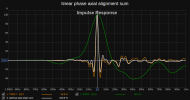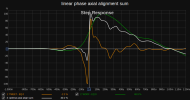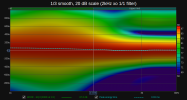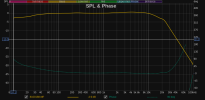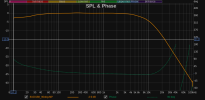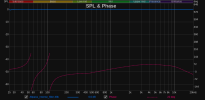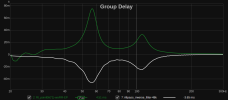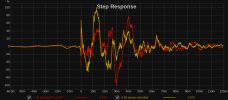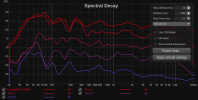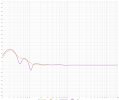I have been trying hard to find better workflows on my own, but as we all know, the more we get to the limit, the harder.
I will study your graphs tomorrow.
about avoiding negative excess phase: while the midrange is all cluttered even in my treated room and we better aim for a minimum phase behaviour, I don't think this is true for the bass. you see a minimum phase roll-off has group delay, as we all know. why should we aim for this? If we make the bass linear phase the exess phase will go into the negatives because the delay is expected. we are still linear phase though, and therefore there is nothing coming too early. rather we are now spot on.
here is a correction I tried with excessphase and phase correction combination with 15fdw windows. It didn't work out (because of the midrange), but I can show you what I mean with the result:
wavelet before
View attachment 300079
after
View attachment 300080
and this is the excess phase
View attachment 300081
I was wondering about this aparent contadiction before in this thread, but as I just explained, I am now convinced this is the ideal.
see:
View attachment 300082
very close to our utopic ideal that should be an dirac impulse:
View attachment 300083
if we make this sytem minimum phase in the bass this would be delayed.
again, this correction I am showing here doesn't work. I might be chasing the impossible here, but I just wanted to point out my thoughts about the minimum phase / linear phase thing


